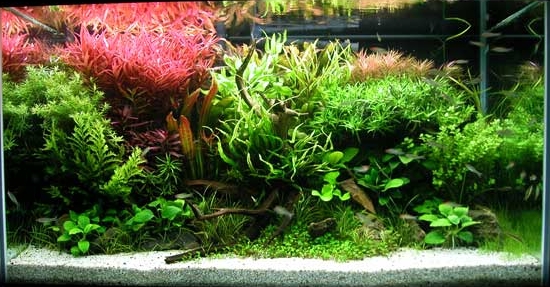|
Micranthemum Micranthemoides
''Hemianthus micranthemoides'', also known as Micranthemum micranthemoides, pearl grass and pearl weed, is a popular aquatic plant most commonly used in aquascaping Aquascaping is the craft of arranging aquatic plants, as well as rocks, stones, cavework, or driftwood, in an aesthetically pleasing manner within an aquarium—in effect, gardening under water. Aquascape designs include a number of distinct styl .... It is very similar to '' H. callitrichoides'', but has somewhat larger leaves. It belongs to the group of aquarium plants commonly known as "pearl weed". Distribution Hemianthus micranthemoides is native to the mid-atlantic region of the United States. It is believed to be extinct in its native range. In the aquarium Hemianthus micranthemoides is a very popular aquarium plant. References Scrophulariaceae Aquatic plants Plants described in 1817 {{Scrophulariaceae-stub ... [...More Info...] [...Related Items...] OR: [Wikipedia] [Google] [Baidu] |
Thomas Nuttall
Thomas Nuttall (5 January 1786 – 10 September 1859) was an England, English botany, botanist and zoologist who lived and worked in America from 1808 until 1841. Nuttall was born in the village of Long Preston, near Settle, North Yorkshire, Settle in the West Riding of Yorkshire and spent some years as an apprentice printer in England. Soon after going to the United States he met professor Benjamin Smith Barton in Philadelphia. Barton encouraged his strong interest in natural history. Early explorations in the United States In 1810 he travelled to the Great Lakes and in 1811 travelled on the Astor Expedition led by William Price Hunt on behalf of John Jacob Astor up the Missouri River. Nuttall was accompanied by the English botanist John Bradbury (naturalist), John Bradbury, who was collecting plants on behalf of Liverpool botanical gardens. Nuttall and Bradbury left the party at the trading post with the Arikara Indians in South Dakota, and continued farther upriver with Rams ... [...More Info...] [...Related Items...] OR: [Wikipedia] [Google] [Baidu] |
Aquascaping
Aquascaping is the craft of arranging aquatic plants, as well as rocks, stones, cavework, or driftwood, in an aesthetically pleasing manner within an aquarium—in effect, gardening under water. Aquascape designs include a number of distinct styles, including the garden-like Dutch style and the Japanese-inspired nature style. Typically, an aquascape houses fish as well as plants, although it is possible to create an aquascape with plants only, or with rockwork or other hardscape and no plants. Aquascaping appears to have begun to be a popular hobby in the 1930s in the Netherlands, following the introduction of the Dutch style aquascaping techniques. With the increasing availability of mass-produced freshwater fishkeeping products and popularity of fishkeeping following the First World War, hobbyists began exploring the new possibilities of creating an aquarium that did not have fish as the main attraction. Although the primary aim of aquascaping is to create an artful underwater ... [...More Info...] [...Related Items...] OR: [Wikipedia] [Google] [Baidu] |
Hemianthus Callitrichoides
''Hemianthus callitrichoides'' (also known as dwarf baby tears, cuba or simply the initials HC) is a semi-aquatic plant in the family Linderniaceae. The plant is endemic to West Indies, where it is native to the islands of The Bahamas, Cuba, Hispaniola, Jamaica, and Puerto Rico. In The Bahamas, this species known as "water-starwort". This species is commonly used as a foreground or carpeting plant in planted aquariums. When used in aquascaping, this species is known to have relatively high light and CO₂ requirements. Once planted, each portion will produce runners which basically are individual stems that branch off and grow along the substrate. ''Hemianthus callitrichoides'' was first collected by Holger Windeløv and Eusebio Canicio Delgado Pérez in 2003 in Las Pozas, Cuba, about east of Havana Havana (; Spanish: ''La Habana'' ) is the capital and largest city of Cuba. The heart of the La Habana Province, Havana is the country's main port and commercial center. [...More Info...] [...Related Items...] OR: [Wikipedia] [Google] [Baidu] |
Scrophulariaceae
The Scrophulariaceae are a family of flowering plants, commonly known as the figwort family. The plants are annual and perennial herbs, as well as shrubs. Flowers have bilateral (zygomorphic) or rarely radial (actinomorphic) symmetry. The Scrophulariaceae have a cosmopolitan distribution, with the majority found in temperate areas, including tropical mountains. The family name is based on the name of the included genus ''Scrophularia'' L. Taxonomy In the past, it was treated as including about 275 genera and over 5,000 species, but its circumscription has been radically altered since numerous molecular phylogenies have shown the traditional broad circumscription to be grossly polyphyletic. Many genera have recently been transferred to other families within the Lamiales, notably Plantaginaceae and Orobanchaceae, but also several new families. - on linhere/ref> Several families of the Lamiales have had their circumscriptions enlarged to accommodate genera transferred from t ... [...More Info...] [...Related Items...] OR: [Wikipedia] [Google] [Baidu] |
Aquatic Plants
Aquatic plants are plants that have adapted to living in aquatic environments (saltwater or freshwater). They are also referred to as hydrophytes or macrophytes to distinguish them from algae and other microphytes. A macrophyte is a plant that grows in or near water and is either emergent, submergent, or floating. In lakes and rivers macrophytes provide cover for fish, substrate for aquatic invertebrates, produce oxygen, and act as food for some fish and wildlife. Macrophytes are primary producers and are the basis of the food web for many organisms. They have a significant effect on soil chemistry and light levels as they slow down the flow of water and capture pollutants and trap sediments. Excess sediment will settle into the benthos aided by the reduction of flow rates caused by the presence of plant stems, leaves and roots. Some plants have the capability of absorbing pollutants into their tissue. Seaweeds are multicellular marine algae and, although their ecologi ... [...More Info...] [...Related Items...] OR: [Wikipedia] [Google] [Baidu] |


